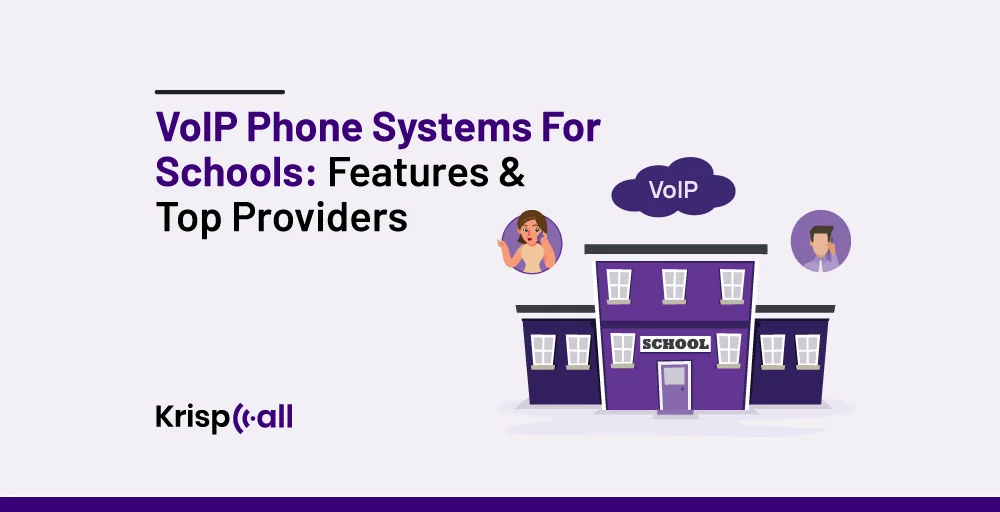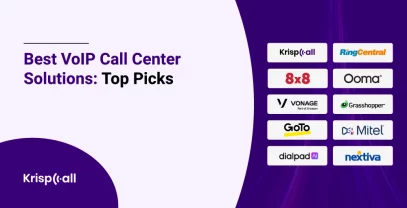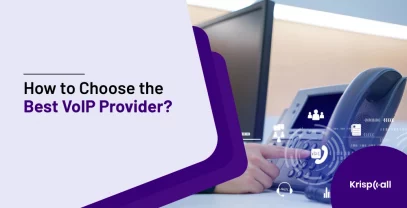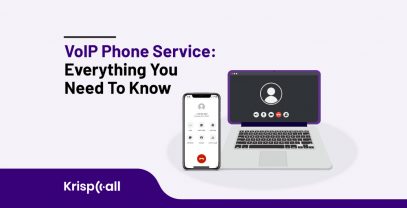Communication is key in every sector, whether in business or in schools. Traditional phone systems often lack the flexibility and scalability needed to support the diverse communication needs of modern schools.
Therefore, most schools nowadays use VoIP (Voice over Internet Protocol) phone systems😀. It offers a robust and cost-effective solution for schools, transforming their phone infrastructure into a powerful communication hub.
🤩 In this guide, we’ll explore VoIP systems for schools, discover the best features to transform your learning experience, VoIP hardware & equipment for schools, and learn how to choose the best system for your needs. We will also suggest the top five best VoIP phone systems for schools.
🔑 KEY HIGHLIGHTS
- KrispCall, Zoom, Nextiva, and RingCentral are popular VoIP phone systems designed for educational institutions.
- The main features of VoIP for schools are group video conferencing, virtual whiteboards, file sharing, virtual faxing, conferencing, and more.
- Some of the most important VoIP equipment and devices for schools include VoIP phones, speakers and microphones, VoIP cameras, and more.
- When choosing the best VoIP system for your school, you must consider your needs, features, scalability, security, budget, and support.
How Does a VoIP Solution for School Work?
VoIP or Voice over Internet Protocol solutions for schools transform communication by using the Internet to make calls. First, voice is converted into digital data and transmitted over the Internet. Schools use a stable internet connection and VoIP-enabled devices, such as IP phones or computers with VoIP software, to make and receive calls.
This system centralizes communication, allowing seamless connectivity between teachers, staff, parents, and students. It enables internal extensions for easy communication within the school and external calls for parent-teacher interactions, administrative tasks, and emergency notifications.
VoIP solutions come with features such as call forwarding, voicemail to email, auto-attendants, and conference calling. In addition, it offers enhanced security measures and can be integrated with the existing school management systems.
5 Best VoIP Phone Systems For Schools
Modern VoIP phone system providers offer a wide range of features like unlimited voice calling, text messaging, video conferencing, and advanced collaboration tools as engaging and effective learning aids.
The table below shows some of the best VoIP solutions for educational establishments. They were selected based on features, pricing, and customer reviews.
| Providers | Features | Pricing | Best For |
| KrispCall | Unified callbox, global calling, voicemail to email, power dialer, shared phone number, auto attendant, text message, and call forwarding | Starting at $15/month | Educational institutes that require advanced features |
| Nextiva | Collaboration tool, mobile app, conference calling, call analytics, and voicemail | Starting at $25.95/user/month | Educational institutes that need comprehensive VoIP services |
| Zoom | Voice calls & video conferencing, call routing & forwarding, auto attendant services, easy integration with other platforms & systems | Starting at $15/user/month | Educational institutes that require extensive virtual interaction and collaboration |
| RingCentral | Screen calls, intercom, enhanced business SMS, AI meeting insights, and unified communication features | Contact Sales | Schools looking for unified communication and scalability |
| Call Hippo | Power dialer, smart switch, global connect, call recording, and call conference | Starting at $25/user/month | Schools needing a robust functionality and cost-effective solution |
1. KrispCall
KrispCall stands out as a powerful school cloud phone system featuring a simple yet comprehensive unified callbox that consolidates multiple communication channels in a single dashboard. It offers affordable subscription packages, advanced business communication features, and robust security measures. KrispCall serves as an efficient automatic calling system for schools, thanks to its advanced auto-attendant capabilities.

KrispCall is a versatile VoIP phone system provider ideal for schools seeking reliable communication solutions. Known for its user-friendly interface and seamless integration capabilities, this VoIP phone system offers a range of features tailored to educational environments.
⚡ Key Features
- Intelligent Call routing
- Call recording
- Call analytics
- Voicemail to email
- Call monitoring
- Click-to-call widget
- Voicemail
- Contact Tags
💡 Pros & Cons
👍 Pros
- Provides essential features for schools like auto attendant, call routing, voicemail, and call recording.
- Integrates with popular school software like Google Workspace and Microsoft 365 for seamless communication.
- Scalable to support growing schools and changing user needs.
👎 Cons
- Restriction on logging into the app from multiple devices under one subscription.
💰 Pricing
- Essential – $15/month
- Standard – $40/month
- Enterprise – Custom
2. Nextiva
Nextiva is a cloud-based phone system designed to help schools and colleges build stronger connections with students. By integrating multiple communication channels, Nextiva gathers information from various sources to deliver optimal results. Its platform is user-friendly, making it simple to set up and efficient for everyday operations, ensuring that educational institutions can enhance their communication strategies seamlessly.
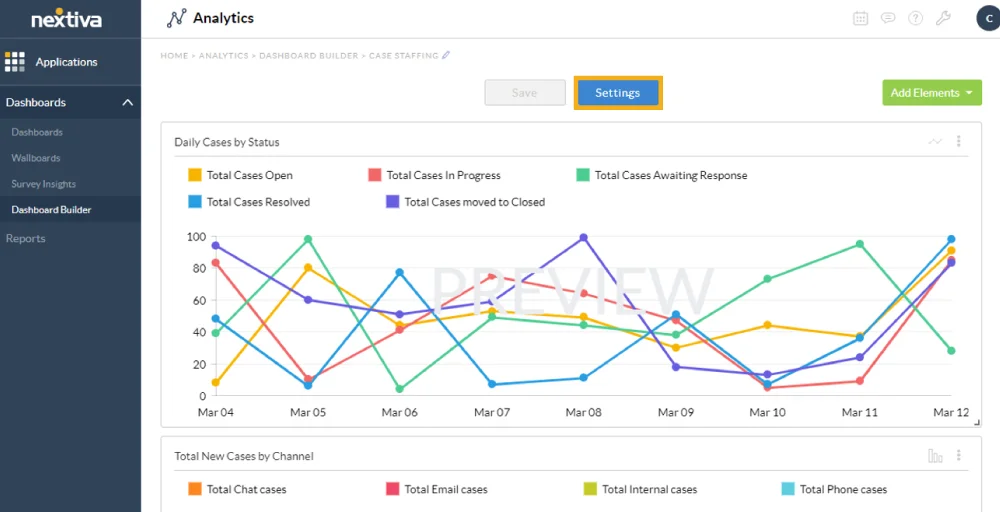
This is an all-in-one VoIP phone system provider that offers various advanced features such as conference calling, call analytics, voicemail, and more. Ideal for schools, offices, and e-learning, Nextiva offers teachers and staff a simple and easy-to-use virtual phone system.
⚡ Key Features
- Collaboration Tool
- Mobile App
- Conference Calling
- Call Analytics
- Voicemail
💡 Pros & Cons
👍 Pros
- Seamless integration with popular school management software like Salesforce, Zendesk, and Microsoft 365.
- 24/7 customer support via phone, email, and chat for IT administrators.
- Detailed analytics and reporting to optimize school communications.
👎 Cons
- Potential compatibility issues with legacy on-premises phone systems.
- Lack of advanced security features like multi-factor authentication.
- Potential learning curve for teachers and staff to adopt new VoIP system.
💰 Pricing
- Essential – $25.95/user/month
- Professional – $30.95/user/month
- Enterprise – $40.95/user/month
3. Zoom
Zoom is a comprehensive communication platform renowned for its robust video conferencing capabilities, making it a popular choice for educational institutions. Its VoIP phone system, Zoom Phone, offers a cloud-based solution with features like call routing, auto-attendant, voicemail transcription, and call recording.
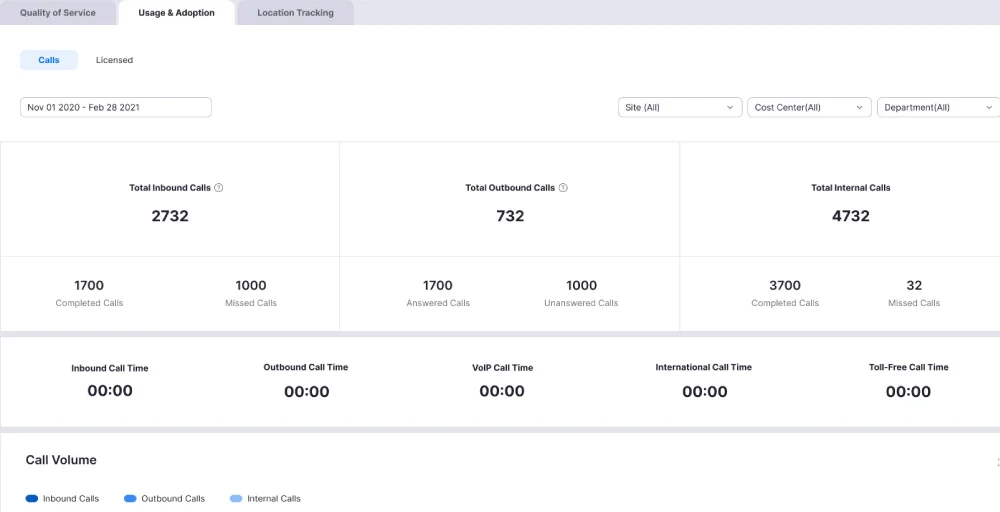
Zoom integrates seamlessly with its video and chat services, providing a unified communication experience for school staff. With Zoom, you can combine voice calls, video conferencing, chat, and file sharing into one platform, streamlining communication between teachers, students, and parents.
⚡ Key Features
- Voice Calls & Video Conferencing
- Call Routing & Forwarding
- Auto Attendant Services
- Easy Integration with Other Platforms & Systems
- Call Handling Panel & Analytics
💡 Pros & Cons
👍 Pros
- Provides customized classrooms and hardware via Zoom Rooms to closely replicate the in-class experience.
- Automates administrative tasks and emergency alerts.
- Offers high-quality video and audio for virtual classrooms.
👎 Cons
- Pricing may be higher compared to some education-focused VoIP providers.
- Requires reliable high-speed internet access and compatible hardware.
- It may not have all the specialized features tailored to the unique needs of schools.
💰 Pricing
- Zoom Phone – $15/user/month
- Zoom Webinars – $340/license/month
- Zoom Rooms – $49/month/room
4. RingCentral
RingCentral is the leading cloud communication service provider for schools and colleges, offering its robust Message Video Phone (MVP) platform. This platform effectively replaces traditional on-premise PBX systems and standalone video conferencing tools, providing a flexible and cost-effective solution.
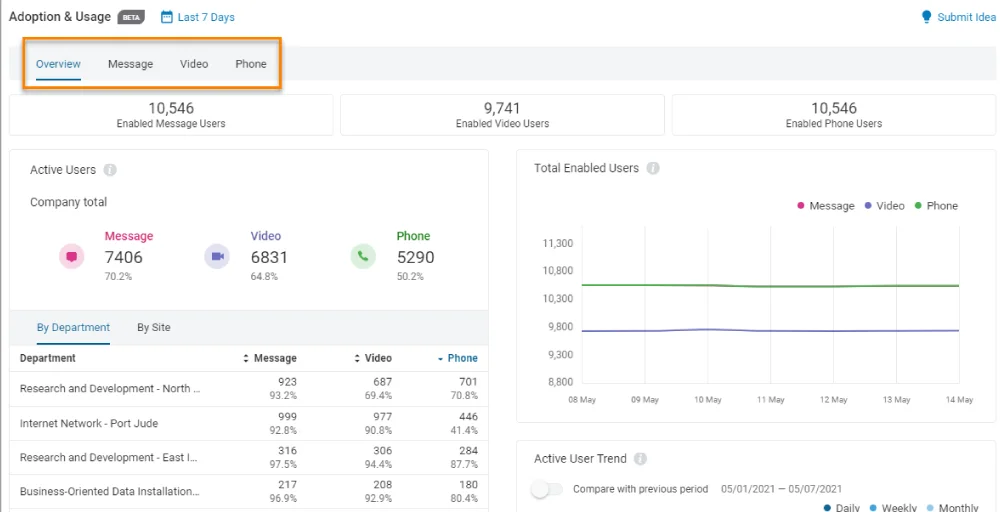
RingCentral’s MVP platform boasts powerful features, including seamless third-party app integration, allowing users to access all necessary tools and services from a single, unified interface. It offers a complete school communication system combining unified communications, a cloud phone system, video conferencing, virtual faxing, SMS, and collaboration tools into a unified platform.
⚡ Key Features
- Screen Calls
- Intercom
- Enhanced Business SMS
- AI Meeting Insights
- Unified Communication Features
💡 Pros & Cons
👍 Pros
- A comprehensive suite of communication tools, including voice, video, messaging, and collaboration features.
- Easily scale up or down as school communication needs change.
- Offers reliable uptime and robust security features.
👎 Cons
- Pricing can be on the higher end, which may be a consideration for school budgets.
- The initial setup and onboarding process is more complex for some schools’ support.
- Performance is dependent on a school’s internet connectivity.
💰 Pricing
- Contact the RingCentral sales team for pricing.
5. CallHippo
CallHippo is a VoIP service provider designed to enhance communication efficiency for schools and educational institutions. It offers a range of features ideal for managing school communications, including virtual phone numbers, call forwarding, IVR systems, and call analytics.
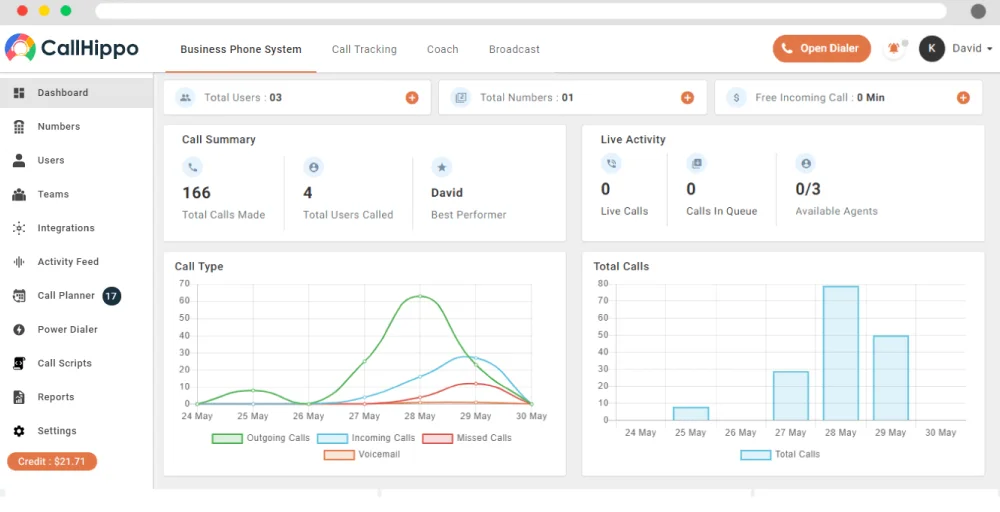
CallHippo’s platform is user-friendly, making it easy for school staff to set up and manage phone systems without extensive technical expertise. Additionally, it provides integration with popular educational tools and CRM systems, facilitating seamless communication between teachers, administrators, and parents.
⚡ Key Features
- Power Dialer
- Smart Switch
- Global Connect
- Call Recording
- Call Conference
💡 Pros & Cons
👍 Pros
- Mobile and web apps for managing communications from anywhere.
- Flexible add-ons for scalability.
- Easy to set up and integrate with CRMs like HubSpot, Salesforce, and Zoho.
👎 Cons
- Limited features in the free plan.
- No service-level agreements in entry-level call center plans.
- APIs aren’t sufficiently powerful.
💰 Pricing
- Starter – $25/user/month
- Professional – $40/user/month
- Ultimate – $55/user/month
Top VoIP Features For Schools
Voice over Internet Protocol (VoIP) systems have numerous features that can improve communication in the school environment.
The most useful features of private school VoIP are:
1. Video Conferencing with Breakout Rooms
Video conferencing with breakout rooms is a game-changer for schools using VoIP systems. It allows educators to create smaller, focused online sessions within the main video conference. This is perfect for group projects, study sessions, or differentiated learning activities.
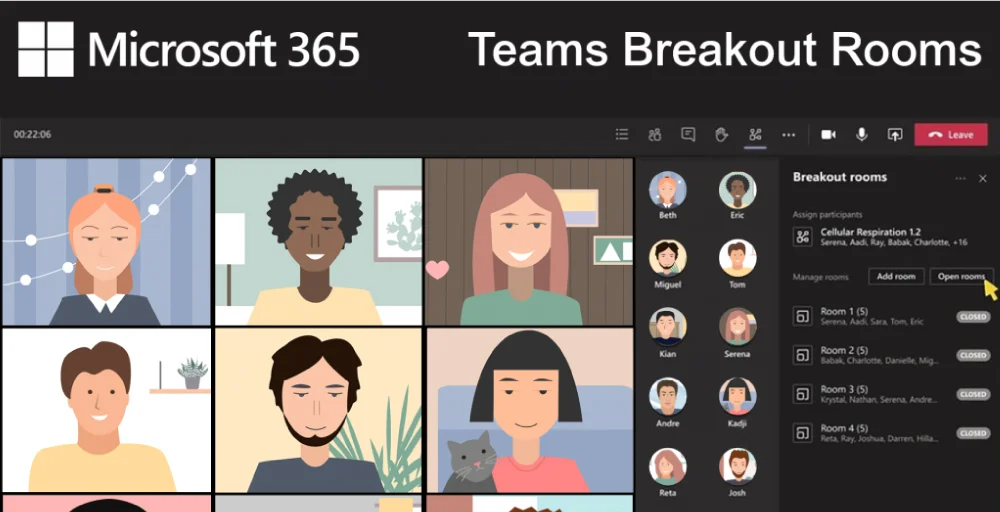
Students can work collaboratively in these virtual rooms while the teacher easily monitors and pops in to offer guidance. It mimics the benefits of in-person breakout groups, fostering student interaction and engagement in a remote or hybrid learning environment.
2. Virtual Whiteboards
Combining a virtual classroom with a VoIP system that offers features like screen sharing and text messaging can create a powerful learning environment for your school. This platform allows teachers to write, collaborate, and share ideas closely with students in real-time, even in remote learning environments.
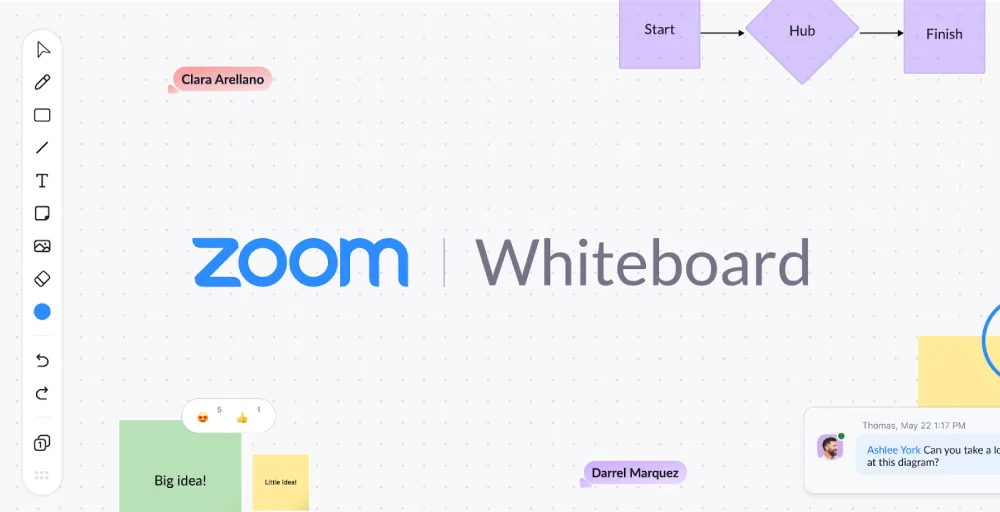
For example, imagine a virtual classroom where everyone, regardless of their location, can participate on a digital whiteboard. This promotes participation and breaks down geographical barriers, facilitating participation and interaction.
🙂 Related Best Screen Sharing Software
3. Third-Party Integration
The capability of a school VoIP system can be evaluated through third-party installations. This allows VoIP systems to seamlessly integrate with existing educational tools such as learning management systems (LMS), computers, or classroom voting applications.
It automatically records student attendance when you join a video call or start a quick quiz within a video conference. Third-party integrations simplify workflows, save time, and keep everything in one place for teachers and students.
4. File Sharing and Virtual Faxing
A good VoIP system can simplify document management in your school by providing file sharing and virtual telephony. Secure file sharing allows teachers to easily share assignments, presentations, and other resources with students digitally.
This eliminates sending brochures or emailing large files and ensures that everyone has access to the latest version as quickly as possible. On the other hand, virtual faxing is a reliable and inexpensive way to send and receive important documents to outside parties who still rely on faxing.
5. Conference Calling
Conference calling is a key feature of VoIP systems that allow large groups to participate in a single call. It allows schools to facilitate meetings and collaborative conversations with leaders, teachers, staff, and even parents without physical presence.

Conference calls remove the limitations of traditional telephone systems, enabling seamless communication and coordination across multiple locations. Schools can use this feature to host virtual faculty meetings, parent-teacher conferences, and other collaborative sessions, improving efficiency and reducing travel costs.
6. IVR and Call Routing
Interactive Voice Response (IVR) and call routing are essential VOIP features that improve school communication and expedite calls to the correct place. IVR automates call management and scheduling menus, allowing parents and staff to navigate to services or staff.
This feature reduces call duration and improves overall response time by diverting calls based on predefined criteria such as time or caller. Moreover, it will help clarify the management process and improve your school’s communication infrastructure.
7. Mobile App Access
Access to mobile applications is a key feature of VoIP systems, allowing schools to use smartphones and tablets from anywhere. It allows faculty, staff, and even students to access the VoIP system from their personal devices, allowing them to make and receive calls, view voicemail, and collaborate on the go.
Mobile integration eliminates the need for physical desk phones, increases flexibility, and enables remote work or study. This feature increases productivity, increases accountability, and supports a networked and more engaged school community.
8. Accessibility Features
Accessibility features are critical to VoIP systems designed for schools and ensure the right learning environment for all students. These features include live meeting captioning, screen announcements, real-time translation, and audio/screen recording to ensure that all students with disabilities or special needs can participate in virtual classes.
Multilingual IVR, call and text recordings, and voice-to-email improve access by providing information in multiple languages and formats. By ensuring mainstream access, schools can create inclusive and supportive learning environments for students of all abilities.
9. E911 and Emergency Services
E911 (Enhanced 911) is an important VoIP feature that allows schools to quickly and accurately route emergency calls to the appropriate emergency center. When 911 is called from a VoIP system, E911 automatically displays responders the caller’s location, including the building, floor, and room number.
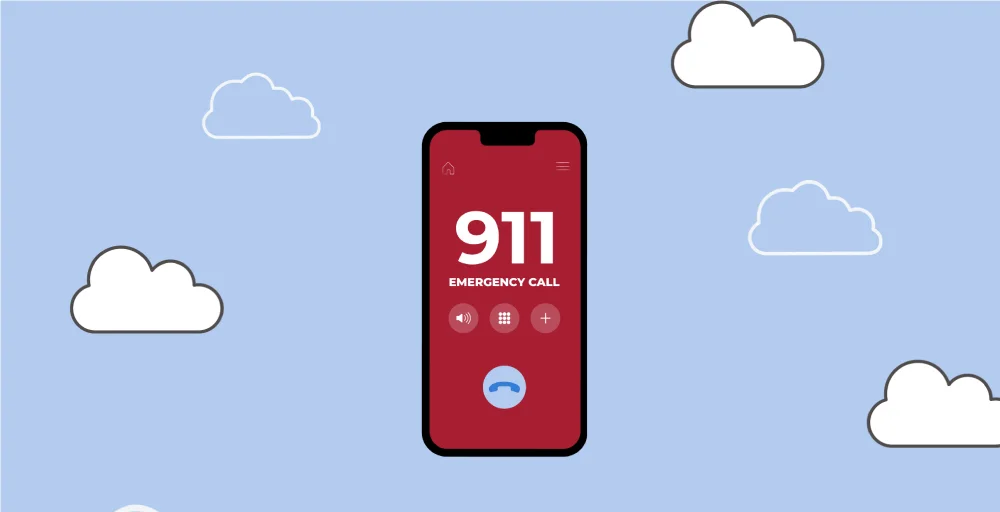
This allows for faster and more targeted emergency care, which is very important in an emergency. E911 integration helps schools comply with state regulations and increases the safety of students, staff, and visitors.
10. Security and Provider Support
School VoIP phone systems should prioritize strong security features and reliable service provider support. Security features should include password-protected audio/video meetings, virtual waiting rooms, meeting locks, full encryption, and 24/7 network monitoring to prevent student cheating, protect privacy, and a safe learning environment.
Comprehensive VoIP software training for staff and students is also important to maximize the capabilities of the system. These security and support features give schools confidence that their communications are secure and reliable.
School VoIP phone systems require specialized equipment and devices that allow advanced communication capabilities beyond voice calls.
Some important VoIP equipment and devices for schools include:
- VoIP Phones: VoIP phones refer to IP desk phones with features such as HD audio, video conferencing, color touch screens, and programmable buttons. Popular models are Cisco IP Phone 8865, Poly Trio C60, and Yealink T46U.
- Speakers and Microphones: Classroom speakers and microphones with built-in intercom for emergency calls and multi-way reception are essential for schools.
- VoIP Webcams: HD webcams enable virtual classroom monitoring and remote learning. Popular models include the Razer Kiyo 1080p Webcam, the Logitech C922 Pro Stream Webcam, and the Logitech Brio 4K Webcam.
Significance of Having a School Phone System
Here are some significance of having a school phone system:
- Enhanced Communication: The school’s phone system facilitates seamless communication between staff, parents, and students. Teachers can easily communicate with colleagues and parents to discuss student progress or solve problems. Parents can quickly contact school personnel with questions or emergencies.
- Improved Safety and Security: VoIP phone systems play a crucial role in enhancing safety and security within educational institutions. It enables instant communication between staff, administration, and emergency services, ensuring rapid response during emergencies. Features such as automated alerts, intercom capabilities, and integration with security systems allow for the efficient dissemination of critical information.
- Increased Efficiency and Productivity: A dedicated school phone system significantly enhances both efficiency and productivity within educational institutions. It streamlines communication among staff, teachers, students, and parents, facilitating quick and effective information exchange. With features like automated attendants, call routing, and voicemail-to-email, administrative tasks become more manageable, reducing the time spent on manual operations.
- Professional Image: A reliable phone system for private schools portrays a professional image for the school. Parents appreciate the ease of contacting the school and staff. It also demonstrates a commitment to clear and organized communication with all stakeholders.
- Streamlined Operations: School phone systems can be integrated with other technologies such as calendars and learning management systems. This allows you to use features like scheduling calls directly from your calendar or sharing documents during a video conference. This will create a better digital ecosystem for schools.
How to Choose a School VoIP Phone System?
Choosing the right school VoIP phone system can be challenging. When choosing a VoIP phone system for a private school, you need to consider several factors like:
- Essential Features: Prioritize the features that are important to your school. Mandatory elements may include call routing for efficient call management, voicemail message management, and video conferencing for distance learning or parent conferences.
- Security and Reliability: School phone systems handle sensitive information. Choose a provider with robust security measures to protect data and ensure reliable call quality to avoid disruptions.
- Budget and Cost Factors: Identify your budget and consider all the costs involved. Look beyond the initial costs of hardware or software and consider monthly fees, maintenance costs, and potential staff training needs.
- Customer Support: Reliable customer support is crucial for any VoIP system. Choose a service provider with responsive and knowledgeable support staff to help you resolve technical issues or answer questions quickly.
- Scalability and Growth: Consider future growth when choosing a system. As your school expands, choose a solution that adapts to growing users or changing needs.
Conclusion
VoIP phone systems are a powerful solution for schools looking to streamline communication and collaboration. These systems go beyond traditional phone lines to provide immersive experiences with features such as video conferencing, voice recording, and on-demand access.
However, choosing the right VoIP system for your school requires careful consideration. Schools must assess their needs, configure critical features such as phone routing and video conferencing, and ensure that the system is compatible with current equipment.
Suppose you are looking for a VoIP phone system. In that case, KrispCall is one of the best VoIP phone systems for schools, offering advanced features such as intelligent call routing, click-to-call widget, call recording, call monitoring, call forwarding, and more.
FAQs
Do schools use a VoIP phone system?
Yes, schools use VoIP phone systems to effectively communicate with staff, students, and parents, manage administrative tasks, and protect against theft and other campus security issues.
Which is the best phone system for schools?
KrispCall stands out as an excellent phone system for schools, providing a diverse array of advanced features including intelligent call routing, call forwarding, and more.
What benefits does the VoIP phone system offer educational institutions?
VoIP offers many advantages to educational institutions:
- Reduced telephone costs.
- Easier communication for distance learning and collaboration.
- Easy integration with other digital tools for better performance.
- Scale to meet changes in user numbers and growing user needs.
On average, how much does a school phone system cost?
The cost of a school phone system can vary widely depending on several factors, including the size of the school, the number of users, the features required, and whether the system is on-premise or cloud-based. Typically, schools can expect to spend between $20 to $40 per user per month for a cloud-based VoIP system.

